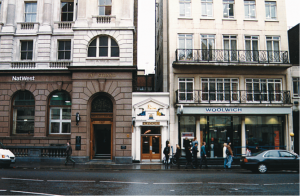If You Build It, They Don’t Always Come: Alternatives to Empty Commercial/Retail Space on the Ground Floor of Mixed Use Buildings
By Leigh Kellett Fletcher |

Many multi-family and mixed use developers completing residential infill projects in urban areas are required by local governments to incorporate retail or other commercial space in the ground floor of their projects. The laudable goals of these types of requirements is to activate street fronts, increase economic activity in the urban core and move toward a more vibrant 24 hour city to attract the most sought after city residents – the young creative class.
The reality is that forced retail, built in areas with existing vacancies and a small customer base is hard to lease and can actually exacerbate the vacancy problem the well-intentioned planning policy intended to eliminate.
If your proposed project is in an area where existing retail space is vacant or underutilized by undesirable tenants that are forcing rents below economically feasible returns on investment, here are a few options to propose to regulators as a compromise:
- Locate multi-family residential amenities and leasing offices on the first floor within spaces designed (through fenestration, access points, etc.) to look like commercial activity is occurring on the ground floor. Fitness centers, business centers and the property management office all add to the appearance of an “activated” ground floor even if use is restricted to building residents and potential residents.
- Incorporate live/work units on the ground floor. Live/Work units typically contain a working space that is open to the public with a separated private space in which the small business owner resides. Units can be single story with divided spaces (residential portion toward the interior of the building), loft spaces if the ground floor plat has enough volume with the residential space in the loft, or two story units in which the bottom floor is commercial and the upper floor is private residence. The advantage of these units is that you are actually providing “commercial” ground floor. Typically, live/work units are leased or purchased by either independent professional services providers (architects, lawyers, designers) or creative users (jewelry makers artists, and craft artisans).
- Create a business Incubator or virtual office and conference center. These uses often house one or more reception/support staff and private offices, collaborative work space and conference center space. Services offered include a mailing address, phone answering, and work space on a flexible basis, sometimes even leased by the hour. Some incubators focus on particular industries, other virtual offices are more commercial in nature and serve any willing customer. The local economic development agencies, SCORE and economic development non-profit agencies may have resources to support this type of use, ranging from financial support for build out to staffing support.
If the local government insists on traditional retail space, two other options are to 1) build cold shell space, condominiumize the building and attempt to sell the downstairs to a retail developer, or 2) complete a simple build out and donate leased space for a period of time to a community arts or service organization that will provide a positive appearance to potential tenants for the upper floors.
Creative uses of ground floor space should be negotiated as part of initial development approvals as the uses described above potentially can impact parking requirements, ingress and egress requirements, floorplate dimensions, ventilation and insulation. However, done correctly both the government’s planning goals and the developer’s pro forma requirements can be achieved in mixed use projects.
Leigh Kellett Fletcher has been practicing land use, environmental and real estate law since 1997 and regularly represents clients acquiring, developing and selling real estate in Florida and the U. S. Virgin Islands. She has been involved in the purchase, sale and redevelopment of multi-family residential projects, office, commercial and mixed use properties and has worked with clients to obtain land use entitlements and environmental permits to develop and expand commercial development.
